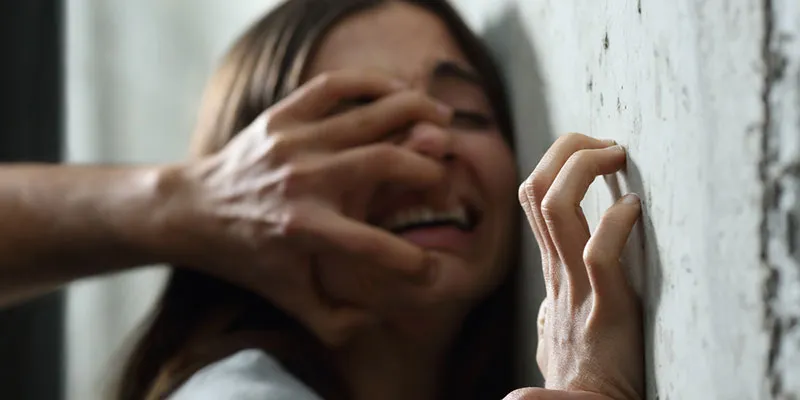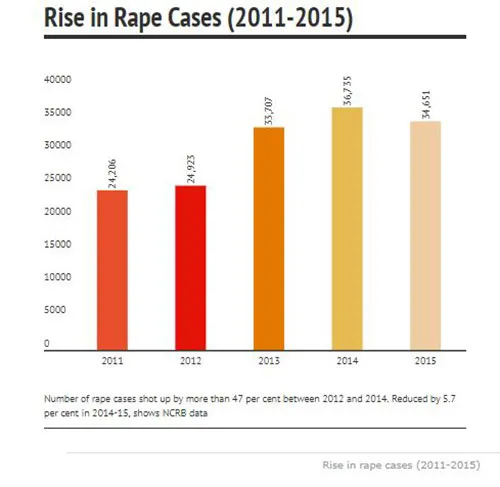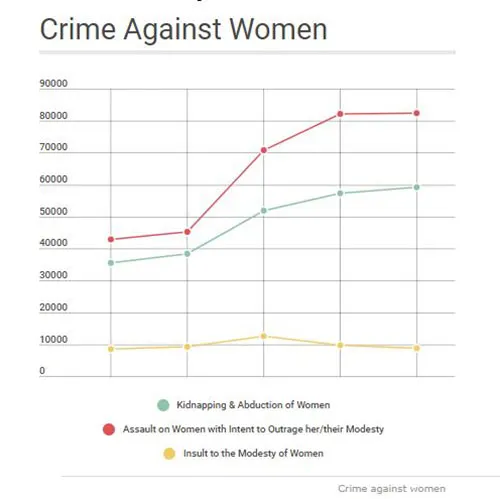Why the rapes did not stop after Nirbhaya
Several key recommendations of the Verma Committee on criminalisation of marital rape, monitoring of illegal patriarchal village councils like khap panchayats and review of security laws in conflict zones have been ignored.
July 4, 2017: A 16-year-old girl was raped and murdered in the Kotkhai area of Shimla district, her body was recovered from the nearby forest two days later.
February 2, 2017: A 35-year-old woman was gangraped in Hauz Khas village, an upscale locality in New Delhi. Recently, a group of men tried to abduct a woman from the same area. Instead of taking strict action against such rowdy elements, the Delhi Police plans to ban all women’s nights in bars in the area.

Image: Shutterstock
In 2012, the Delhi gangrape incident, in which a physiotherapy student was gangraped and tortured in a private bus, brought the issue of rape onto discussion platforms, street protests and also pushed the government to come up with stronger policy and law on crime against women. Ever after five years India is not a safe nation for women. In fact, the situation is only worsening.
The data from the National Crime Records Bureau (NCRB) shows that number of rape cases shot up by more than 47 per cent between 2012 and 2014. The cases pending investigation for year 2012 were 13,695, which rose to 14,940 in 2013 and 16,032 in 2014.
Why is this happening?
The Nirbhaya case in 2012 had led to the formation of Verma Committee which came up with recommendations to prevent and counter increasing cases of sexual assaults. The Union government incorporated some of its suggestions on voyeurism, stalking and trafficking into the Criminal Law Amendment Act 2013 but many contentious topics such as marital rape and monitoring of khap panchayats were ignored.
A special Nirbhaya Fund was started to financially support several activities proposed by the Ministry of Women and Child Development.
The truth, however is that the Nirbhaya Fund has remained unspent for the third time since its allocation. According to the approved Union finance account for 2015-16 tabled in Parliament in December 2016, the government had devised two schemes — a Rs 653 crore scheme for safety of women on public road transport under the Ministry of Road Transport and Highways and the Nirbhaya Project worth Rs 79.6 crore under the Ministry of Home Affairs. Neither of these schemes could take off, resulting in complete savings of the proposed allocations.

The government had allocated Rs 461 crore for employment and rehabilitation of manual scavengers. Again, this project could never take off. There was also a special programme devised for development of road connectivity in Naxal-affected areas, where women and children are often the worst sufferers, with an allocation of Rs 920 crore. This again had complete savings at the end of the year for the Road Transport ministry's failure to implement the schemes.
Other measures proposed by the Ministry of Women and Child Development included :
One Stop Centres/SAKHI Centres - Started in April 2015, it supports women affected by violence, provides them first aid, medical aid, police assistance, legal aid, and counselling support. Out of the 186 centres approved, only 79 are operational.
Helpline Security - Department of Telecommunications allotted the number 181 as a toll free number. Funds released by the Centre to 33 States but only 18 are operational.
Mahila Police Volunteers - A link between police and community. Haryana became the first state to start this in December 2016. Other states may follow but there’s no fixed deadline.
Several ministries and states have also come up with proposals on women’s protection but they are still stuck in implementation stage. The amount allocated to different projects is approximately Rs 1,530 crore while the expenditure incurred is around Rs 400 crore.

However, all these measures focus on enhanced protection of women instead of their empowerment or looking at the reasons for crime against women. Several key recommendations of the Verma Committee on criminalisation of marital rape, monitoring of illegal patriarchal village councils like khap panchayats and review of security laws in conflict zones have been ignored.
Freelance journalist Namita Bhandare, who started the largest online campaign on the Nirbhaya gangrape, feels we need to dismantle patriarchy before any real change can be made. “Policy decisions and statements made in Parliament show that the government continues to preserve and protect patriarchy on the issue of marital rape. Nothing changes unless you first dismantle patriarchy and recognise women as equal citizens, with equal right to life and dignity. Social change, starting with education, must be a focal point,” she says.
Mandatory sex education including gender sensitisation in schools was one of the key recommendations by the Verma Committee that is yet to see light of the day. The committee had also strongly advised against introducing death penalty for rapes calling it regressive. The new law, however, sanctions death penalty in extreme cases and for repeat offenders.
India as a nation, with a rich history, a diverse culture, and being a progressive nation, should clearly understand that the development of the nation does not solely depend on men. We clearly do not want to live in a society deprived of care, tenderness, strength, and deprived of women.
(Disclaimer: This article, authored by Nancy Aswal, was first published on GOI Monitor.)







